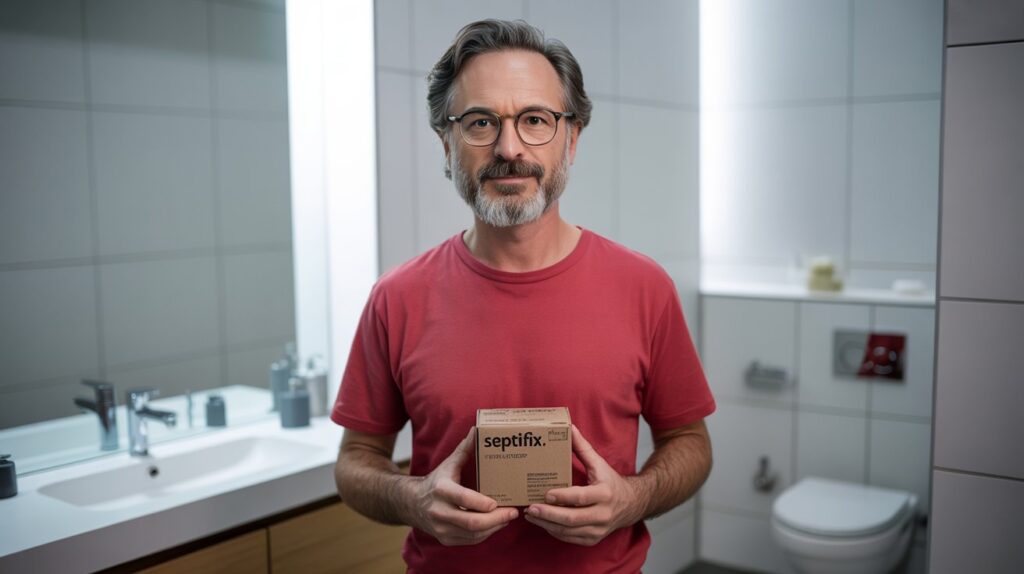Have you ever wondered about the best way to maintain a healthy septic system? With Septifix tablets, you have a game-changing solution at your fingertips to keep things running smoothly. But just how often should you use these tablets to get optimal results? Let’s explore everything you need to know about using Septifix tablets effectively to ensure your septic system stays in great condition.

Understanding Septifix Tablets
Before getting into the optimal frequency of use, it’s essential to understand what Septifix tablets are and how they function. Essentially, Septifix tablets are powerful treatment solutions designed to help homeowners maintain their septic systems. They contain bacteria and enzymes that work together to break down waste, ensuring a clean and efficient process.
How Septifix Tablets Work
Septifix tablets release billions of beneficial bacteria and enzymes every time you drop a tablet into your toilet. These organisms eat through the organic sludge, paper, and grease, converting the waste into water and gases. This process leads to less frequent pump-outs and a more efficiently functioning septic system.
Benefits of Using Septifix Tablets
Using Septifix tablets can save you money by reducing the number of pump-outs needed. They also help to eliminate odors and prevent backups, ensuring that your septic system works smoothly over the long term. Moreover, Septifix tablets are designed to be environmentally friendly, providing an eco-conscious way to manage household waste.
Why Maintenance Matters
Regular maintenance of your septic system is crucial. Not only does it prevent inconvenient and costly problems, but it also extends the lifespan of your septic system. A well-maintained system is less likely to develop clogs, leaks, or overflows.
The Cost of Neglect
Ignoring septic maintenance can lead to severe issues such as system failures, backups, or leaks. These problems can result in unpleasant odors, unhealthy surroundings, and expensive repair bills. Regular use of Septifix tablets can serve as a proactive measure to avert such issues.
Signs You Need More Frequent Septifix Use
If you notice any frequent backups, slow drains, or unpleasant odors, it might indicate that you need to increase your use of Septifix tablets. These are signs of imbalance in your septic system, suggesting that the helpful bacteria in your system are overwhelmed and need reinforcement.


Determining the Optimal Frequency
Now that you know how valuable these tablets are, let’s discuss how often you should use them to keep your septic system in peak condition.
Standard Frequency Recommendations
Typically, for most average-sized households, using Septifix tablets once a month is recommended. This frequency suffices for maintaining a balanced bacterial ecosystem within the septic tank.
Factors Influencing Usage Frequency
Several factors can influence how often you should use Septifix tablets. It’s worth considering these aspects to tailor the optimal frequency for your specific situation:
- Household Size: Larger households might generate more waste, thus requiring more frequent tablet use.
- Water Usage: If your family uses a significant amount of water, it might dilute the bacterial concentration, necessitating more frequent dosing.
- Tank Size: Smaller tanks might need more frequent treatments due to their limited capacity.
- Previous Issues: If your septic system has a history of problems, consider using tablets more frequently as a preventative measure.
Adjusting Frequency Based on Experience
It’s crucial to monitor how your septic system responds after using Septifix tablets. If you start noticing improvements and a consistently well-functioning system, you’ve likely found the right frequency. If problems persist, consider adjusting the usage accordingly—either increasing or decreasing usage based on the signs you observe.
Best Practices for Using Septifix Tablets
Using Septifix tablets is straightforward, but following best practices can enhance their effectiveness.
Proper Tablet Placement
Drop a Septifix tablet into your toilet bowl and flush. The tablet should dissolve and begin working its way through the system, spreading beneficial bacteria throughout your septic tank.
Timing Considerations
It’s best to add the tablets to your system after periods of low water usage, such as at night or before going on vacation. This timing maximizes the contact time between the bacteria and the waste before new water is introduced.
Consistency is Key
Be consistent with using Septifix tablets according to your determined optimal frequency. Skipping or irregular use may lead to imbalanced bacterial levels, making the system less effective over time.
Troubleshooting Common Septic Issues
Even with optimal use of Septifix tablets, occasional issues may arise. Knowing how to address these problems can save time and stress.
Frequent System Backups
If your system backs up often despite regular tablet use, the issue may lie with blockages in the pipes or a full septic tank that needs professional pumping.
Persistent Odors
Persistent odors might indicate insufficient bacteria in the system or leaks somewhere in the plumbing. Consult a professional if the problem continues after increasing Septifix usage.
Slow Draining
Slow drains can be the result of clogs in the drain pipes. Identifying and removing the blockage can often correct slow drainage issues. Septifix tablets can help prevent new clogs from forming.
Environmental Impact of Septifix Tablets
One of the strong selling points of Septifix tablets is their environment-friendly nature. Understanding this aspect can help you make informed choices about maintaining your septic system.
Biodegradable and Safe Ingredients
Septifix tablets are composed of natural, biodegradable materials that pose no harm to the environment. The bacteria and enzymes they contain are specifically chosen for their effectiveness and safety.
Safe for All Plumbing Systems
These tablets are engineered to be safe for all types of plumbing systems, from older cast-iron setups to newer PVC installations. They won’t corrode or damage your pipes, which adds to their long-term value.
Case Studies and Real-World Examples
To make this information relatable, let’s consider some real-world examples of how different households have benefited from using Septifix tablets.
Case Study 1: The Three-Person Household
A small family of three with moderate water usage found that using Septifix tablets once a month significantly reduced their need for professional pumping services. They experienced fewer backups and noticed the elimination of septic odors around their home.
Case Study 2: Large Family in a Rural Area
A larger family living in a rural area relied heavily on their septic system. They adjusted the frequency of Septifix use to every two weeks, which helped manage the increased waste and prevent system failures during periods of high usage, such as holidays.
Case Study 3: Aged Septic System in an Older Home
An older home with an aging septic system faced frequent issues before implementing a regimen of biweekly Septifix Tablet use. Over time, they noticed improved system performance, fewer problems, and extended time between necessary pump-outs.
Conclusion
Incorporating Septifix tablets into your septic maintenance routine can be a proactive step in ensuring a well-functioning septic system. By determining the optimal frequency based on household needs and following best practices, you can reap the benefits of a clog-free and odorless environment. Regular, considerate use of these tablets not only saves money but also supports an environmentally friendly approach to household waste management. A balanced septic system enhances your home comfort, giving you one less thing to worry about in your daily life.


